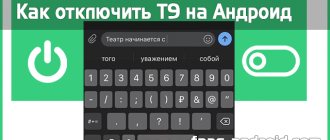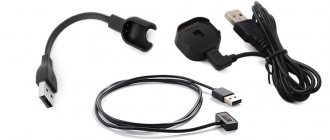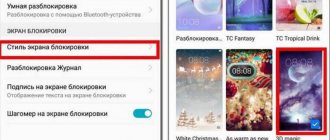How to use a smartphone: tips for beginners - znaykak.ru
This article is intended for those users who picked up a smart phone for the first time. Modern smartphones have long ceased to perform only the simplest functions of providing voice communication and exchanging SMS messages. Today, these devices have become reliable and faithful assistants to a person in everyday life. Find out the latest news - no problem, contact friends and acquaintances who are located anywhere in the world - no questions asked. Moreover, if previously you had to pay for an expensive international call, today, thanks to various instant messengers, you can organize a video conference only if you have an Internet connection. And it doesn’t matter at all where your interlocutor is if he also has a modern gadget with a connection to the World Wide Web.
But this is not all that can be done using a smartphone. Calculate the optimal route for a car trip or bike ride, keep track of your physical activity, calorie consumption/burning, assist in planning a family budget, find new friends and even a soulmate - all this is possible with a small smart device. But for your smartphone to become truly smart and useful, you need to configure it correctly. And our short instructions will give you the basics of how to use a smartphone as a beginner.
Android OS
Nowadays, the most common operating system installed on tablets is Android. If you have not had to deal with this operating system before (for example, on a smartphone), you may find the controls very difficult and confusing at first. But this is only the first impression, which is often very misleading.
In fact, there is absolutely nothing difficult in working with it; it’s just that ignorance scares us all at first. And once you understand, you will see for yourself that Android is a simple and effective operating system. This is why these instructions exist for dummies who got their hands on the tablet for the first time.
Android is a simple and efficient operating system
Google play
First of all, let me remind you once again that you need a Google account to access Google Play. Information about him was at the beginning of the article. The icon of the store itself is always located on the central desktop of the smartphone - this is one of Google’s requirements that all manufacturers are forced to follow.
At the top of the screen there is a search bar; if you are looking for a specific application, you can immediately enter its name there. Just below are buttons leading to the main sections of the Google store: applications, games, movies, music, books and magazines.
Some sections of the store do not yet work in all countries, but games and applications are available to absolutely everyone. Next is a list of interesting new movies, various selections of applications, tips from the built-in recommendation service, and other similar information.
We are primarily interested in the games and programs sections. First of all, it is worth noting that applications are both paid and free. When purchasing free applications, everything is clear - just click on the “Download” button and then check the list of permissions that the application requires to work.
As for paid applications, first you will be asked to choose a payment method. This is either a credit card or your cell phone account. True, not all mobile operators support the latter option yet, but there’s nothing you can do about it.
Sections of programs and games consist of several screens, switching between which is carried out using a horizontal swipe. The home screen displays recommendations from friends and advice from Google Play editors. The left screen is dedicated to a list of categories, with which you can quickly get to the desired subsection.
To the right of the main screen there are screens with lists of the most popular paid and free applications. If you don’t know what exactly to install on your new smartphone, be sure to look there.
Unfortunately, popularity is a fickle thing. And, in theory, it’s also quite possible to increase the rating. And sometimes some very strange applications that are of interest only to a very narrow audience get into the “Top”. But time-tested programs, which almost everyone has already installed, sometimes disappear from the “Top”, because the number of new downloads of them is not so large.
That is why for new Android users we have prepared a selection of the highest quality, in our opinion, applications of all categories.
Viber
Viber today is one of the most popular communication solutions. After installing all the previous programs, you are no longer afraid of anything, so we won’t even go into detail about how to set up Viber on an Android tablet. Everything is as always - go to the Play Market, find the application, install it. Registration is very simple, the only thing is that you definitely need a SIM card, you will receive an SMS with a registration code that you will need to enter. We get to the start menu, and then, as in Skype, we add friends and enjoy communication.
Lenovo tab 3 essential 710l 8gb
General characteristics:
- diagonal 7 inches;
- built-in memory 8 GB;
- support for memory cards up to 32 GB;
- OS Android 5.1;
- RAM - 1 GB;
- 4-core MediaTek MT8321 processor;
- Wi-Fi, Bluetooth, 3G, GPS;
- SIM card support;
- main camera - 2 MP;
- front camera – 0.3 MPix;
- battery - 3450 rubles.
Pros according to user reviews - constant firmware updates from the manufacturer, fast operation, battery life lasts a long time, support for 2 SIM cards.
The disadvantages include the creaking of the case, low sensitivity of the display, and not very loud sound.
Cost - 4199 rubles.
Lenovo TAB 3 Essential 710L 8Gb
Main parameters:
- 7-inch display;
- built-in memory 16 GB, microSDXC slot, support for memory cards up to 128 GB;
- Android 7.0;
- RAM - 1 GB;
- 4-core processor Spreadtrum SC7731G 1300 MHz;
- Wi-Fi, 3G;
- main camera - 2 MP;
- front camera - 2 MP;
- battery - 4100 mAh.
Advantages: lightweight and convenient, high-quality assembly, holds a charge well.
Disadvantages - it slows down when running several applications at the same time, weak camera, slow mobile Internet.
Price - 5765 rubles.
HUAWEI MediaPad T3 7.0 16Gb 3G
In the video about getting started with the tablet
Turn on the device, log into your account and establish a connection to the Internet
Following the instructions, we turn on our smartphone or tablet, after which the system desktop will appear in front of you, or, if the device is turned on for the first time, the initial setup wizard will start. For example, on a smartphone the wizard suggests doing the following:
- Select interface language.
- Connect to the Internet via Wi-Fi - if you don't have a network nearby, you can skip this step. Why does this menu appear the first time you turn it on? Due to the fact that most programs are designed to be used with a working Internet connection. This does not mean at all that a phone or tablet is useless without the Internet; this step was created rather for convenience - they say, connect to it immediately, so as not to worry about it later.
- Next, the system wizard will prompt you to log into your Google account or create one if you have not yet acquired an account. We highly recommend that you create an account for yourself, because the Android system itself is strongly tied to Google services. Without it, you won't be able to access the app store and won't be able to use email. In addition, creating an account is not difficult, but it will always be with you on all devices where you want, which is quite convenient.
- In the next menu you need to confirm the time and date, which are almost always determined automatically, or enter them manually.
- In the last window you will see items related to determining your location - it is better not to turn them off so that all services work correctly and the smartphone correctly determines the time and date.
Installing a memory card and SIM card
To install an SD card in Huawei tablet 10 you need:
- Turn the tablet back up
- Open the protective cover of the SD memory card slot
- Unfold the memory card with the contacts facing up, insert it into the slot and press until it clicks.
Installing a memory card
Extraction occurs in reverse order.
Remember, to safely remove the SD card, you must either turn off the tablet or go to Main Menu – Settings – Memory – Disconnect SD card.
To install a SIM card you need:
- Turn the tablet back up
- Open the protective cover of the SIM card slot
- Unfold the SIM card with the contacts facing up, insert it into the slot and press until it clicks.
Removing the SIM card is carried out in the reverse order.
Remember, before installing the SIM card, you must turn off the tablet, or reboot after installation; only after turning on the SIM card will be automatically detected and registered with the mobile operator.
Protection against accidental purchases
Google Play also has one more disadvantage. Or rather, not so much from Google Play itself, but from modern games and applications distributed under the Free-to-Play scheme. The vast majority of them have an in-game purchase system, which can be a very unpleasant surprise.
Many parents let their children play games on their smartphone from time to time. And, of course, they don’t expect any trick at all at this moment. In fact, what can a small child do while playing some “Swampy the Crocodile”, Cut The Rope or Angry Birds? Especially when sitting next to your parents?
Unfortunately, many people underestimate the speed with which modern children understand new technology. Having quickly mastered the controls and completed a couple of levels, the child may become interested in colorful icons that offer access to new fairy-tale characters or beautiful objects.
Separately, I note that the fact that the game is in the “Free Games” section does not at all guarantee the absence of in-game purchases. Quite the contrary – the creators of most free games love to force a variety of paid content on users.
This includes the purchase of in-game currency, and special items, and special bonuses, and new heroes, and access to secret missions... In some games you have to pay even just to go through several levels in a row. And you will be constantly reminded of all these opportunities during the game, using colorful banners and thoughtful tooltips.
More about Huawei: Buy 10.1″ Tablet Huawei M3 Lite 10 32 GB 3G, LTE golden in the DNS online store. Features, price Huawei M3 Lite 10 | 1256741
It is very easy to distinguish “shareware” games from “completely free” ones. If a game allows for in-game purchases, this will be clearly stated on its Google Play page. The corresponding inscription is located next to the “Install” button. The game will require similar permission during installation.
To solve the problem of random purchases once and for all, you should set a password on them. This is very easy to do. First of all, you need to open the Google Play application store. Usually its icon is located right on the main screen of the smartphone.
Then open the side menu. You can do this by clicking on the icon in the upper left corner of the screen or simply swiping your finger from the left edge of the screen to the right.
Now all that remains is to go to the settings section and click on the line “Require a password upon purchase.” On most devices, the default option is “Ask every 30 minutes.” In this case, you will only need to enter your password once every half hour, and all other purchases in this interval can be made without additional confirmation.
I hope that these instructions will allow you to avoid annoying misunderstandings that have a negative impact on the condition of your wallet.
Problems and their solutions
Remember, if the tablet is under warranty, you should not solve the problem yourself; it is better to use a service center. If the warranty has expired or the service did not help, solve the problem yourself at your own peril and risk.
The list is compiled based on reviews, read “huawei mediapad 10 fhd 16gb 3g tablet reviews.”
- The tablet is defective or damaged (defects were noticed in the first batches)
Solution:
Carefully inspect the tablet before purchasing for manufacturing defects, broken display pixels, cracks or scratches, and if there are any, ask for a replacement
- Tablet won't turn on
Solution:
Place it on charge and charge for several hours. If that doesn’t help, connect it to the charger while holding down the “Volume+” button. If the tablet does not turn on, take it to a service center.
- The tablet freezes when turned on on the welcome screen and does not respond to actions.
Solution:
Press the "Power" button and wait until the tablet turns off. If the problem persists when you turn it on again, there is most likely a problem with the firmware. To solve it, you need to go to the official website of the developer https://www.huaweidevice.com/ru/, in the “Support” section, select “Downloads”. Find your model and download new firmware. All instructions for installing the firmware can be found in the archive. If it doesn't help, only the service will help.
Obtaining Root rights
Remember, when you receive root rights, the Huawei 10 tablet may not be accepted for warranty service.
First of all, you need to download the USB driver to the tablet from the official website: https://www.huaweidevice.com/ru/ You won’t be able to download it separately, you’ll have to download the firmware and install the USB driver from it, or find them on the network separately and install them .
Download the RootWizard program from the link: https://4pda.ru/forum/dl/post/3398456/RootWizard.exe
The following actions:
- Before running the RootWizard utility, disable all firewalls and antiviruses.
- Run the utility
- On the tablet, go to “Settings” - “USB debugging” (enable “Unknown sources”)
- Connect tablet
Running utility
- After the computer detects the tablet, run the utility. In the window that appears, click “Root Now”
Getting Root
Wallpapers, widgets, icons
But let's get back to the desktop. As I already said, Android can have several of them, and this is done for a reason. After all, the desktop can contain not only application icons, which do not take up much space, but also voluminous widgets.
Widgets are not only beautiful, but also very useful. They allow you to immediately display all the information you need, without forcing you to launch the corresponding application each time. This could be a clock widget, a weather widget, a widget with sticky notes for notes or purchases, a widget with a list of letters or photos of contacts, a widget with basic switches and much, much more.
For a long time, widgets have been the hallmark of Android. During the existence of this OS, thousands of different widgets of all colors and sizes have been created. Most of them can work on any firmware or proprietary shell, but there are also some that cannot be installed on “non-native” smartphones.
In addition, we should not forget about the aesthetic side of the issue. Not everyone likes it when their desktop is completely cluttered with widgets and icons that make it difficult to see the beautiful wallpaper. This is not a problem on Android - create an additional desktop and move the icons that are bothering you there.
You can change the wallpaper or add a new widget to your desktop using the desktop editing mode. It is activated on different smartphones slightly differently. Basically, you either need to make a long tap on an empty space on the screen, or perform a “pinch” on any desktop.
In general, customizing the appearance and convenient organization of the workspace is one of the strengths of the Android OS. A whole series of articles on our blog is devoted to this issue; you can read them by clicking on the banner below.
Here I will only focus on setting my own ringtone. The fact is that in Android smartphones this point is often not implemented very clearly and raises questions among new users.
When your tablet needs tweaking
The tablet must be configured whenever the user's preferences require it.
- This mainly happens immediately after the purchase. The standard settings do not contain radical changes, but most likely they will not meet the user's requirements.
- You will also need to configure the gadget again at the moment when some system failure occurred and you had to return the device to factory settings in order to start everything from scratch.
- The parameter settings menu is always available. And if suddenly the user’s preferences change , then he can immediately make changes to the system interface or alerts. Often, installation and operation of applications will be sensitive to edits, and after resetting the settings you will have to change something.
It is impossible to predict when the need to edit settings will arise, so you must always be prepared for this.
Transferring contacts from an old device
At this point, the initial setup of the smartphone is completed and you can use it. The only question is how to transfer contacts from your previous phone to it.
If this is not your first Android smartphone, then all contacts are most likely already stored in the Google cloud service. Unless, of course, you disabled their synchronization on your old smartphone.
You can check whether your contacts are saved in Google directly from your computer. To do this, go to Gmail and select “Contacts” in the upper left corner.
If you are “moving” from a smartphone running on some other platform, then you can transfer contacts in two ways. The first way is to write them to a SIM card. A few years ago, most people used it and it suited everyone.
But today this method is already noticeably outdated. Firstly, it is far from a fact that your old phone and your new Android smartphone have the same SIM card format. For example, the old device could use a standard miniSIM card, while the new one could use its micro- or even nano-analog.
The second way is to export contacts from your old phone as vCard (.*vcf files). This method supports most models on the market, although there are still annoying exceptions. Next, the *vcf file can be written to a microSD card or transferred to a smartphone in any other way. For example, using mail.
To import vCard contacts into a new smartphone, you need to open its address book, click on the “Menu” button, go to the “Contact Management” section and select “Export and Import”. From here you can either save contacts to a memory card or restore them from a backup.
You will learn more about backing up and transferring personal data (contacts, photos, SMS) to a new smartphone from the seventeenth issue of our column.
How to delete a folder.
In order to delete a folder, tap on it and hold your finger for a few seconds, a trash can appears at the top or bottom of the screen, drag our folder onto it. In some versions of the OS, when you hold your finger on a folder, an additional menu appears, in which there is a “Delete” item, just click on it and the folder is deleted.
<<Back. Lesson No. 30. What is Bluetooth (bluetooth)
>>Forward. How to take a screenshot on your phone
Data backup and recovery
Backing up data to a microSD card
- Not all devices support microSD cards.
- How this function works may differ depending on the operator used.
Back up your data on a microSD card so you don't lose important files.
1 Open the Backups application.
2 Select Backup > SD card > Next.
3 Select the data you want to back up and click Backup.
Enter your backup password in the provided field. No password is required to back up photos, audio, video, and documents.
- Set up a password hint that will help you remember your password if you forget it.
- By default, backup files are saved in the HuaweiBackup folder in the Files application.
Backing up data to your phone's internal memory
Save a backup copy of your data to your phone's internal memory to avoid losing important files. You can back up only small files.
1 Open the Backups application.
2 Tap Back up > Internal storage > Next.
3 Select the data you want to back up and click Backup.
Enter your backup password in the provided field. No password is required to back up photos, audio, video, and documents.
- Set up a password hint that will help you recover your password if you forget it.
- By default, backup files are saved in the HuaweiBackup folder in the Files application.
Backing up data to a USB drive
Use a USB OTG cable to connect your device to a USB storage device and save backup files on it. This way you can connect a USB flash drive, a memory card reader (card reader), or a device with a microSD card installed in it.
1 Open the Backups application.
2 Click Back up > USB storage > Next.
3 Select the data you want to back up and click Backup.
Sound
Next up is a very important part of any device - sound. Depending on your preferences, the operating system allows you to customize almost all the sounds that the device makes. So, how to set up sound on an Android tablet?
We go to general settings and find the “Sound” line, we get to the menu where we can:
- enable or disable all sounds o;
- configure vibration mode parameters;
- adjust the volume of ringtones, media files, alarms, system sounds and notifications;
- select a melody for incoming calls;
- select a melody for various notifications, for example, about incoming messages;
- enable sound signals when typing, tapping the screen, locking or unlocking the screen.
In the “Sound” tab you can adjust the volume, ringtone and melody.
A separate item on the sound theme is music. Any firmware must have a standard player installed. You, of course, can download any one you like from the Play Market or add additional features like an equalizer to the standard one. To view available audio files, you need to find the Music application.
Discounts and sales
However, Google Play also has plenty of pleasant surprises. Namely discounts, bonuses and sales. Although the prices in the Google Store are usually not too high, the opportunity to save money is always nice.
Many users of Android devices do not even suspect that discounts on certain programs appear on Google Play almost every day. Sometimes we are talking about a symbolic 10-20% discount, but sometimes the discount is 90%, or even 100%. The only problem is that it is almost impossible to manually monitor changes in the prices of the Google store assortment - there are too many different programs in it.
But this grief is not difficult to help. You just need to install a special application that will inform you about current discounts and sales. There are quite a lot of programs of this type. As an example, I will give the AppSales application, which was already mentioned once on this site.
When you first launch the program, you will be prompted to sign in using your Google account, which will add a couple of additional features (synchronizing the list of monitored applications between different devices, receiving recommendations from friends, etc.). However, this is not necessary; you can use the program anyway.
The main screen shows current discounts. As you can see, they are quite solid. Moreover, we are often talking about very well-known programs. For example, in the screenshot you can see an 80% discount on a popular Ubisoft game.
If the general list with discounts includes too many applications that are not interesting to you, you can use a flexible filter system. For example, by selecting program categories of interest or setting a minimum discount percentage.
By clicking on the name of the application, you can view detailed information about it. Its description, system requirements, price change schedule. And if you are waiting for a discount on a specific program, you can simply add it to your watch list.
How to set up a tablet with other OS
The specific settings of tablets and iPads running on other operating systems do not provide significant differences from Android .
The difference will be in slightly different methods of data protection and authorization in a system other than Google.
The basic steps are the same . Manufacturers specifically provided for this so that a person accustomed to one system can easily understand another.
Subscribe to our Social networks
Setting the ringtone
First, let's look at the classic way to set a ringtone - through the settings menu. Go to your phone settings, go to the “Sound” section and select “Ringtone”.
Here is a list of standard melodies pre-installed into the smartphone by the manufacturer. On some devices you can select your own composition directly from the same menu. For example, on the HTC One (M8) smartphone, which is used as an example in this article, this is done by the “ ” icon located in the upper right corner of the screen.
If there is no special button for selecting your own melody in this menu, then you will have to be a little more cunning. And just put the desired audio file in the folder where the system sounds are located - after that it will appear in the list of standard melodies.
To do this, you need to connect your smartphone to your computer using a cable, click the “Start” button on the computer, select “My Computer” and find the icon of your smartphone in the folder that opens. This is exactly what we need to open. Most likely, it will look like this, and its name will coincide with the name of the phone model.
We are interested in the “Media” folder. Inside it there should be an “Audio” folder, and in it, in turn, a “Ringtones” folder. Thus, the full path to the folder we are interested in looks like this: MediaAudioRingtones. This is where you should copy the melody you need.
To be sure, you should restart your smartphone. That's it, now the melody you selected will appear in the general list. In a similar way, you can set a melody for an alarm, only the path in this case will be slightly different: MediaAudioAlarms.
If you don’t want to bother with connecting your smartphone to your computer, you can make it simpler. Open the melody you need in the audio player, and then select “Set as ringtone” in the pop-up menu.
In older versions of Android, there was an unpleasant “glitch”, due to which the melody assigned in this way “went off” after rebooting the smartphone. But I have never seen anything like this on modern phones.
The method of setting a personal melody is slightly different on different smartphone models, but in any case there is nothing complicated here. To begin, open the phone book and tap your finger on the desired contact. Among other information, find the item “Ringtone”, “Call melody” or “Set ringtone”.
If there is nothing like this on the screen, then click on the “Menu” button - most likely, the item we need is there.
Camera
Some novice users find it difficult to understand all the capabilities of the new device, so in this section we will figure out how to set up the camera on an Android tablet. There can be two problems: we don’t know how to turn on the camera or we simply don’t have a special application preinstalled.
So, we need to carefully review all installed applications and find the one we need called “Camera”. Just click on the icon, the interface will open and we can shoot video or take photos. Different tablet models may have different options for installing filters and settings, just experiment, you won’t be able to break anything. To start shooting a video or taking a photo, click on the corresponding icon.
Click on the camera icon with your finger and you will see different settings for videos or photos
If you cannot find the application, you will have to install it yourself. To do this, open the Play Market and enter the query “Camera” in the search bar. We select any application you like and use it in the same way as a standard camera.









